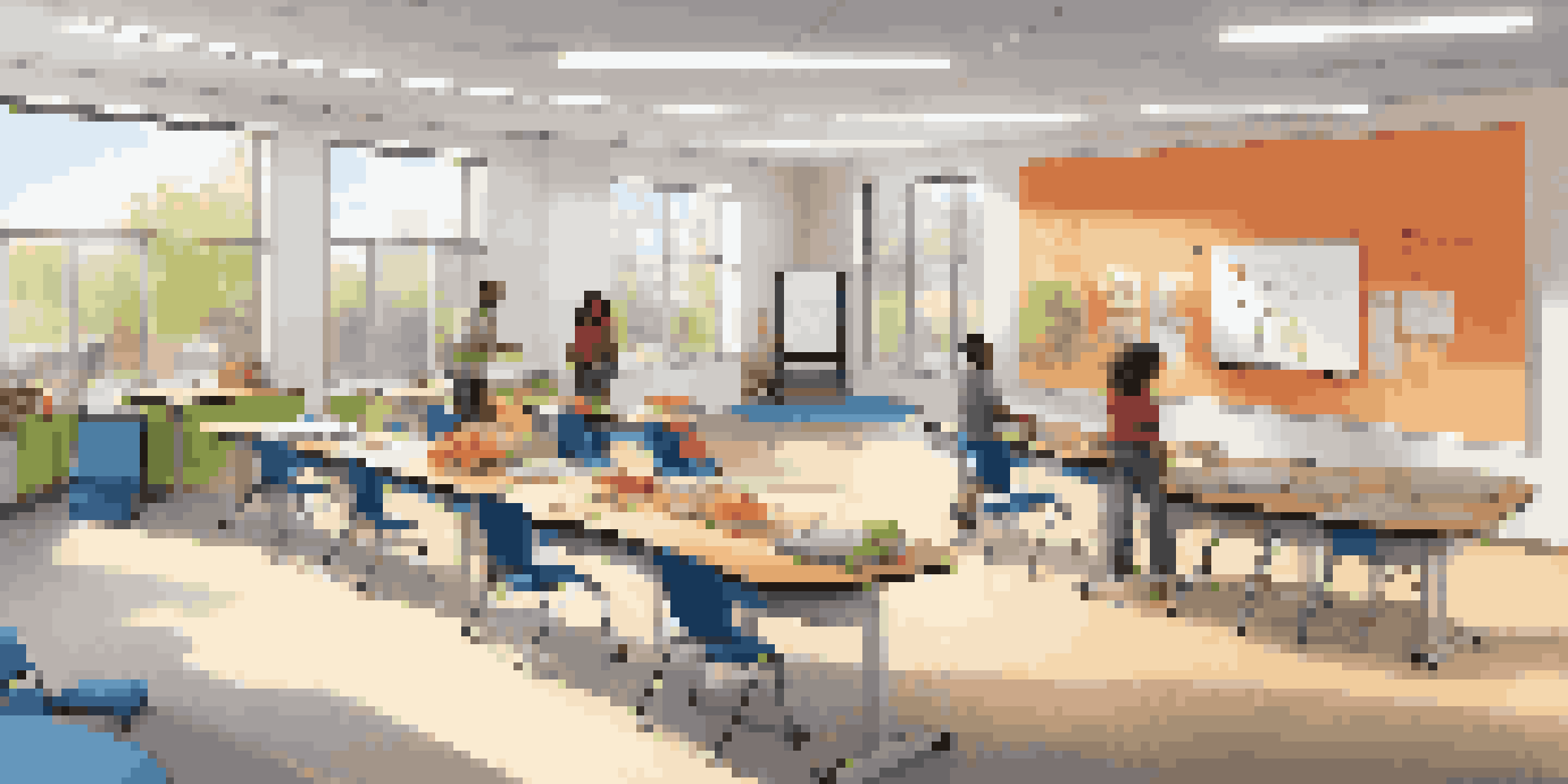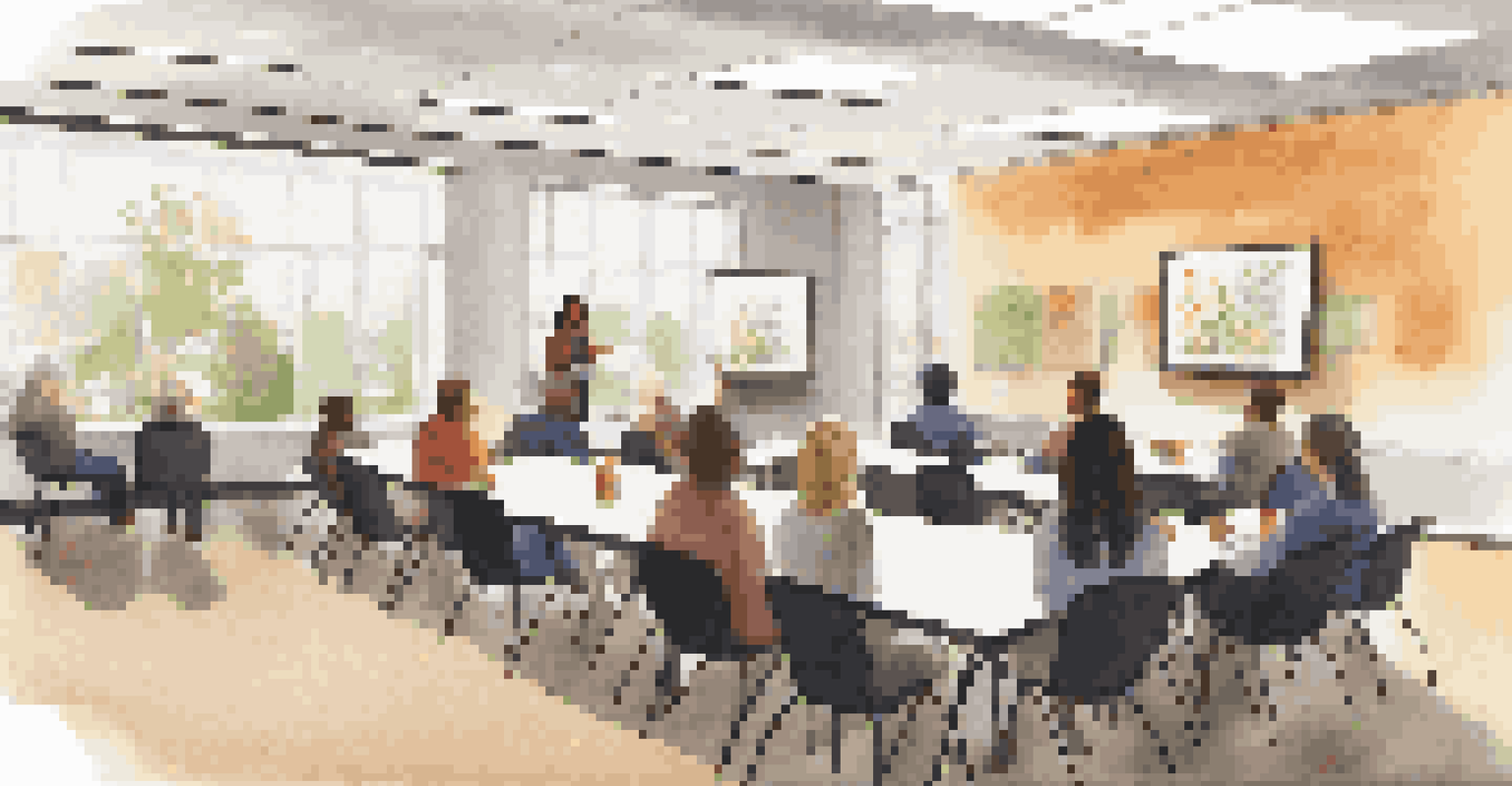How to Implement Student-Centric Learning Spaces

Understanding Student-Centric Learning Spaces
Student-centric learning spaces focus on the needs and preferences of learners rather than the traditional teacher-led approach. By prioritizing student engagement and participation, these environments encourage collaboration, creativity, and critical thinking skills. This shift moves the role of educators from mere providers of knowledge to facilitators of learning.
Education is not the filling of a pail, but the lighting of a fire.
Imagine a classroom where students can rearrange desks, choose their learning partners, and select resources that resonate with their interests. Such flexibility empowers students to take ownership of their learning journey. Understanding the core principles behind these spaces is essential for successful implementation.
Ultimately, creating a student-centric environment means designing spaces that foster a sense of belonging and motivation. When students feel valued and heard, they’re more likely to engage actively, making the learning experience richer and more meaningful.
Assessing Current Learning Environments
Before diving into implementation, it’s crucial to evaluate existing learning environments. Take a close look at how current setups support or hinder student engagement. Gathering feedback from students, teachers, and even parents can provide valuable insights into what works and what doesn’t.

Consider conducting surveys or focus groups to gain a deeper understanding of the needs of your learners. This data will guide your decisions and ensure that changes align with student preferences. Remember, the goal is to create spaces that reflect the voices of those who inhabit them.
Focus on Student Engagement
Creating student-centric learning spaces prioritizes engagement and participation, transforming educators into facilitators of learning.
Once you’ve gathered this information, you can identify specific areas for improvement. Whether it’s creating more flexible seating arrangements or incorporating technology, knowing the strengths and weaknesses of your current setup lays the groundwork for a successful transformation.
Incorporating Flexible Furniture and Layouts
Flexible furniture is a cornerstone of student-centric learning spaces. Think about using movable desks, bean bags, or group tables that allow students to collaborate easily. Having options for different seating arrangements can cater to various learning styles and preferences.
The best way to predict the future is to create it.
For example, some students may thrive in a quiet corner with a comfy chair, while others might prefer working in groups around a table. By providing these choices, you create an inviting atmosphere that encourages exploration and interaction. This adaptability is key to meeting diverse student needs.
Moreover, an intentional layout can enhance the flow of the classroom. Arranging furniture to promote collaboration or designate areas for different activities can help students feel more engaged and focused. Creating zones for quiet study, group projects, or creative work can significantly impact their learning experience.
Utilizing Technology for Enhanced Learning
In today’s digital age, technology plays a vital role in student-centric learning spaces. From interactive whiteboards to learning management systems, integrating tech can enhance engagement and facilitate collaboration. Students are often more motivated when technology is seamlessly woven into their learning activities.
For instance, using tablets or laptops allows students to access a wealth of resources and information at their fingertips. Collaborative tools like Google Workspace or Padlet enable them to work together, share ideas, and provide feedback in real-time. This not only fosters teamwork but also builds essential digital literacy skills.
Embrace Flexible Learning Environments
Incorporating flexible furniture and layouts accommodates diverse learning styles, fostering collaboration and interaction among students.
However, it’s important to strike a balance. Technology should complement traditional learning methods, not replace them. By thoughtfully integrating tech into your learning spaces, you can create dynamic environments that cater to the needs of modern learners.
Encouraging Collaboration and Peer Learning
Collaboration is key in student-centric learning spaces. Creating opportunities for peer learning encourages students to share knowledge and skills, enriching their educational experience. Group projects, peer reviews, and collaborative problem-solving activities can significantly enhance learning outcomes.
Consider adopting strategies like 'think-pair-share' or 'jigsaw' activities, where students work together to explore topics deeply. These methods not only promote teamwork but also help students develop communication and interpersonal skills. Learning becomes a shared journey, rather than a solitary task.
Moreover, fostering a culture of collaboration instills a sense of community within the classroom. When students feel comfortable sharing their ideas and supporting one another, it creates a positive environment conducive to learning. This sense of belonging is crucial for their overall academic success.
Creating a Culture of Feedback and Reflection
A culture of feedback is essential for continuous improvement in student-centric learning spaces. Encouraging students to provide input about their experiences and learning can lead to valuable insights. Regular check-ins and reflection sessions can help you understand what’s working and what needs adjustment.
For example, implementing anonymous feedback forms can make students feel more comfortable sharing their thoughts. This openness can foster a growth mindset, where students learn to view feedback as a tool for improvement rather than criticism. It also empowers them to take an active role in shaping their learning environment.
Cultivate a Feedback Culture
Establishing a culture of feedback and reflection empowers students to actively shape their learning experiences and encourages continuous improvement.
Additionally, incorporating self-reflection activities allows students to assess their progress and set personal learning goals. When they reflect on their experiences, they gain a deeper understanding of their strengths and areas for growth. This practice not only enhances their learning but also encourages lifelong learning habits.
Training Educators for Effective Implementation
Successful implementation of student-centric learning spaces requires ongoing training for educators. It’s essential to equip teachers with the skills and knowledge necessary to facilitate this approach effectively. Professional development programs can provide insights into best practices, innovative teaching strategies, and the use of technology.
Consider organizing workshops or collaborative planning sessions that allow teachers to share ideas and experiences. This peer learning can foster a sense of community among educators and inspire them to experiment with new methods. When teachers feel supported, they are more likely to embrace change.

Moreover, ongoing support and resources are crucial. Providing access to tools, materials, and mentorship can help teachers navigate the transition smoothly. Investing in educator training ultimately benefits students, creating an enriching learning environment that prioritizes their needs.